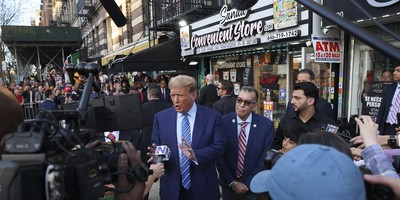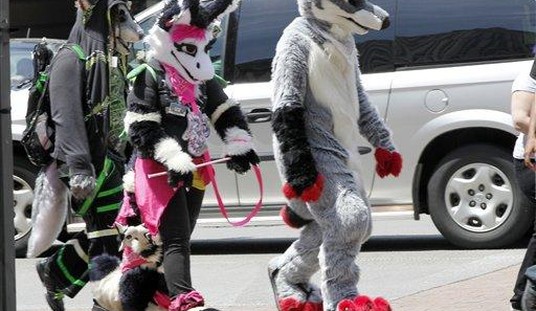It was as frightening as a Halloween trick can be: It happened in broad daylight. It was caught on camera. The government says it really happened.
On Oct. 31, 2006, a covert agent of the Government Accountability Office (GAO) pulled to the side of a Canadian highway that runs along the U.S. border.
Greg Kutz, GAO's managing director of forensic audits and special investigations, explained what happened in a May 16, 2008, report to Senate Finance Chairman Max Baucus. The report summarized GAO's efforts (from 2003 to 2007) to covertly test the effectiveness of U.S. border security.
The covert agent who approached the U.S.-Canada border on Halloween 2006, according to the report, had just received a signal via cell phone from another agent on the U.S. side.
He started walking south, holding a red duffel bag that carried simulated radioactive material. People on both sides of the border saw what he was doing. Someone on the American side called the Border Patrol.
The GAO, meanwhile, thoughtfully videotaped this and similar incidents, and has posted a highlight tape online.
The tape shows a man loading multiple canisters of simulated radioactive material into a conspicuous red duffel bag. It then cuts to clips of a man carrying the duffel bag away from an SUV, walking past a small obelisk marking the U.S.-Canada border and moving into some brush on the U.S. side.
Another clip shows a man carrying the duffel bag as he walks into the United States past a risible black-on-yellow sign that reads: "Illegal Border Crossing/Entry Prohibited/Activities May be Monitored/Violators Will Be Arrested."
A third clip shows a man with the duffel bag walking into the United States past one of the border-marking obelisks, later cutting to a clip of him loading the duffel bag into the back of an SUV.
In the first incident -- where someone on the U.S. side of the border actually notified the Border Patrol about the man carrying the duffel bag -- the Border Patrol did not catch the intruder.
Recommended
Nor did they catch him in the other two incidents -- where no one notified the Border Patrol.
That's not the end of the story. It could happen on the Mexican border, too.
Another incident on the GAO's highlight tape shows a covert GAO agent -- wearing a Hawaiian shirt and white shorts -- walking along a "fence" on the Mexican border. The fence appears to have posts that are alternately about 4- and 6-feet high that stand about 5 or 6 feet apart.
The "fence" otherwise appears completely open. The GAO caption for this portion of the videotape says, "Radioactive material or other contraband could be easily exchanged across this fence."
Kutz says GAO's understanding is that this is a type of fence the Border Patrol uses to stop vehicles from crossing the border.
Anybody viewing the videotape can see it would not stop dogs, cats, trail bikers, or a backpacking emissary from Osama bin Laden.
In a May letter responding to Kutz's report, the Department of Homeland Security said: "Moving forward, CBP (Customs and Border Patrol) intends to complete construction of 370 miles of pedestrian fencing and 300 miles of vehicle fencing along the southern border to enhance border security. Currently, CBP has almost 170 miles of primary pedestrian fencing and 135 miles of vehicle fence in place."
In September, according to Kutz's report, a CPB official testified in the Finance Committee that the Border Patrol had 250 agents along the entire Canadian border at any one time. "This represents a quarter of all agents reportedly assigned to patrol the northern border during that period because the agents work in shifts, and may not be on duty due to sick leave or vacation time."
In an attachment to its May letter, DHS said, "As of April 2008, there were 1,128 agents assigned to the Northern Border, a 16 percent increase from the 972 agents identified in the 2007 GAO report."
Kutz says that given that only about a quarter of the Border Patrol agents assigned to the northern border are on duty at any given time, that would mean the Border Patrol force may now have as many as about 300 agents patrolling the Canadian border at any one time,
"If your goal is to have a secure border -- unless there is some other technology that wasn't there when we looked -- it's hard to believe 300 people can patrol effectively 4,000 to 5,000 miles," he told me. "That's an unreasonable expectation."
He also told me the GAO agents did not plan to trick our border security on Halloween. That just happened to be one of the days they snuck across the border with a load of simulated radiation.
























Join the conversation as a VIP Member